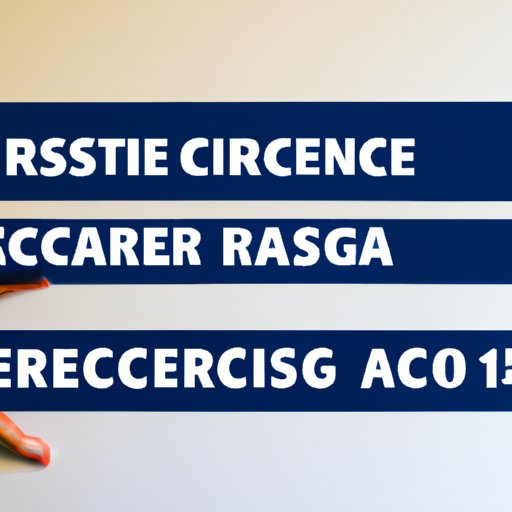
I. Introduction
Weight loss is a common fitness goal among many people. While there are many ways to achieve weight loss, cardio exercise is often touted as one of the most effective. In this article, we’ll explore the benefits, myths and science behind cardio workouts for weight loss.
II. The Benefits of Cardio for Weight Loss: Why You Should Incorporate It into Your Fitness Routine
Aerobic exercise, commonly known as cardio, can be an effective way to lose weight. Cardio helps create a caloric deficit in the body by burning calories, making it easier to lose weight. In addition, cardio exercises improve cardiovascular health and reduce the risk of chronic diseases such as diabetes and heart diseases.
Studies show that people who engage in cardio workouts regularly lose more weight compared to those who don’t. For instance, a study published in the Journal of Sports Science and Medicine found that people who performed moderate-intensity cardio exercise for 30 minutes, three times a week, lost an average of 1.8 kg over eight weeks.
III. How to Maximize Your Cardio Workout for Effective Weight Loss: The Do’s and Don’ts
If you want to maximize the benefits of cardio workouts for weight loss, you’ll need to stick to a regular routine and follow effective techniques. First, it is essential to include high-intensity interval training in your cardio workout routine. This method has been shown to boost metabolism and burn more calories via the afterburn effect.
Secondly, incorporating strength training exercises alongside cardio is effective in building muscle mass and increasing metabolism. Thirdly, you should aim to increase the duration and intensity of cardio workouts gradually to avoid plateauing.
Finally, avoid common mistakes such as not giving yourself enough time to warm-up, not cooling down after the workout, and relying solely on cardio for weight loss without making dietary changes.
IV. Busting Myths About Cardio for Weight Loss: Separating Fact from Fiction
There are several misconceptions about cardio exercise and weight loss. One of the common myths is that longer cardio workouts are more effective for weight loss than shorter ones, which is not entirely true. High-intensity interval training workouts can be completed in less than twenty minutes and be just as effective as hour-length steady-state cardio.
Another common myth is that fasted cardio burns more fat than doing cardio after eating. When you exercise in a fasted state, you may initially start burning more body fat; however, this is not sustained, and your body eventually switches to burning carbohydrates. Thus, it does not ultimately make much of a difference. It is better to choose a cardio time when you can commit to exercising regularly rather than attempting fasted cardio.
Lastly, people often assume that cardio is the only useful exercise for weight loss. While cardio exercise is effective, incorporating strength training exercises is equally important in achieving weight loss.
V. The Science Behind Cardio and Weight Loss: The Link and How It Works
The exact science behind it, but research has shown that cardio influences the body’s metabolic rate and fat burning processes, resulting in weight loss. Cardio improves insulin sensitivity and increases the body’s use of glucose for energy, leading to reduction of fat deposits in the body. It also raises the body’s metabolic rate, which is the rate at which the body burns calories at rest. Therefore cardio workouts can continue burning calories after the workout is finished.
VI. Cardio vs. Resistance Training for Weight Loss: Which One is More Effective and Why?
Both cardio and resistance training can aid in weight loss, but they work in different ways and can benefit the body when used together. Resistance training primarily focuses on building muscle mass and creating a toned appearance, while cardio workouts primarily focus on burning calories.
While cardio is more effective for burning calories, resistance training helps to maintain muscle mass, which raises the metabolic rate over time. The best results come from incorporating both cardio and resistance training into your fitness routine.
VII. The Different Types of Cardio Exercises for Weight Loss: Choosing the Best One for Your Fitness Goals
There are several types of cardio exercises that you can choose from. The most common include running, cycling, swimming, and elliptical training. You can also try low-impact exercises such as walking, stair climbing, and rowing.
The best cardio workout for you will depend on your fitness goals, physical abilities and preferences. For instance, if you have joint problems, walking might be a better option than running. If you want to burn more calories in a shorter time, high-intensity interval training may be more suitable. It’s important to find what you enjoy and what best fits within your schedule.
VIII. Cardio for Weight Loss: Building a Sustainable Routine for Long-Term Success
If you want to see long-term success with cardio for weight loss, creating a sustainable routine is essential. Start by setting realistic goals and gradually increasing the intensity, duration, or frequency of your workouts. It’s also essential to find a workout time and routine that fits into your life, not simply trying to squeeze in cardio exercise.
Consistency is key, and you can find ways to keep yourself motivated, such as tracking your progress, using fun and interactive apps or finding an accountability partner. Additionally, allowing yourself adequate rest and recovery is vital to maintaining a healthy routine in the long term.
IX. Conclusion
Cardio exercise is a powerful weight loss tool with many health benefits. By incorporating it into your fitness routine and sticking to a sustainable plan, you can achieve your weight loss goals over time. Remember that cardio is more effective when combined with resistance training and a healthy diet.
Now it’s time to get moving. Let’s transform your body and achieve your health and fitness goals.




